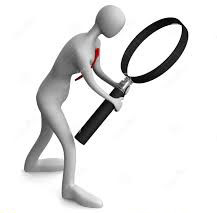
There’s a lot of chatter about developing a culture of philanthropy. And quite a few people have some pretty good ideas about how to do it.
I’m sure it’s not surprising to you that Jeff and I have our own opinions on how best to go about it. We could share with you our 5 to 8 points and, I think, it would be a satisfactory experience.
But a conversation I had in the last few days kept coming back to me. I was with Paul DeBassio, Executive VP of Investor Relations at The United Way Worldwide. I was speaking at the United Way’s international conference in Phoenix, and we were talking the night before. He said: “Richard, what I find is that if you can reduce your talk to one or two practical steps people can take, you have done a good job.”
Well, I got up and did my thing, and I shared five steps people could take to get a culture of philanthropy going in their organization.
And then I was done and I left the conference.
Last night, in the middle of the night, I woke up and remembered what Paul had said to me just a few days ago. And I realized I could have done better at giving all of those good United Way people a very practical way to get a culture of philanthropy going in their organization. (You know how it is – some good ideas come after the fact.)
Here is what I realized. There is only ONE thing you need to do to get yourself and your organization started down a path toward building a culture of philanthropy.
Here it is – just ask the question: “Where’s the Donor?” in every situation you are in.
- You’re in a meeting deciding what donor software to buy. Ask “Where’s the Donor in This?”
- You’re writing copy for a receipt letter. Ask “Where’s the Donor in This?”
- You’re talking to finance about how you can improve receipting. Ask “Where’s the Donor in This?”
- A donor calls to tell you she cannot give as much as last year. “Where’s the Donor in This?”
- A donor has asked for some information, and you’ve delayed getting it because you have so much other work to do. Ask “Where’s the Donor in This?”
- You’re in a management meeting creating next year’s budget. Ask “Where’s the Donor in This?”
- You and your colleagues are discussing corporate values. Ask “Where’s the Donor in This?”
- A program that your donors are supporting needs to be shut down, and program has given you good reasons why it should. “Where’s the Donor in This?”
- You are worried about donor attrition and got a bunch of staff together to discuss what to do about it. “Where’s the Donor in This?”
You get where I am going. If the donor is not present in our minds, we cannot hope to become more philanthropically minded.
If, in any and every situation you face in your organization, you ask yourself and others where the donor is in the situation at hand, you will (over time) become more culturally philanthropic. This will happen because you, and everyone else who heard you utter the words, will start to put your donors in their proper place within the process, the conversation, the copy, the objective and the outcome.
Try doing this during this coming week. And let us know how it goes.
Richard




Hi, Jenny. So good to hear from you. Glad that was helpful.
Richard, I’m leading a fund raising training for the board of a homeless shelter this Wed and am certainly going to incorporate this into my training! Very timely and excellent suggestion!
Thanks!!